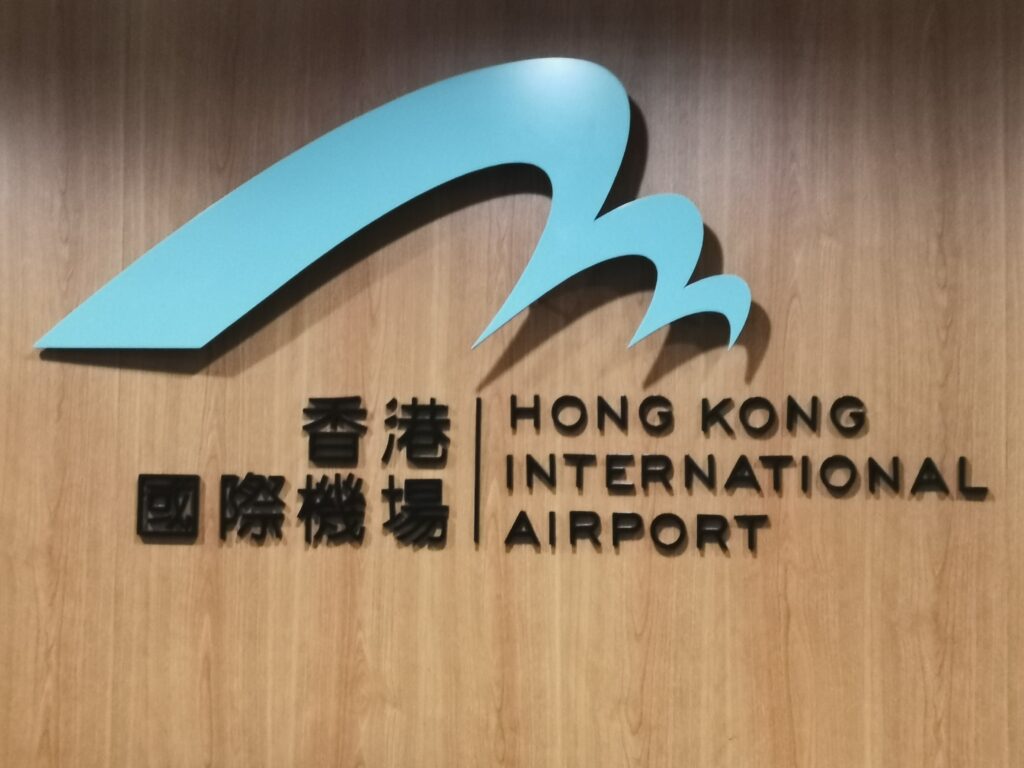The busiest airports in the world act as vibrant centers that connect millions of travelers annually and ease international travel. These airports are essential to the development of connectivity, the global air travel industry, and the local economies in which they operate. Their steady expansion is a reflection of the growing need for affordable, accessible air travel.
Please note that the rankings of the busiest airports can change annually depending on new airports and expansion or new routes and in terms of passenger traffic from year to year. However, Hartsfield-Jackson Atlanta International Airport has led for many years in terms of passenger traffic and it is hard to see this changing in the near future.
Below is our list of the top 10 busiest airports in the world with millions of passengers passing through each airport annually, which brings in billions of dollars to the local economy. Please note, they are not ranked in any order just the busiest airports in 2024.
Jackson Hartsfield Atlanta International Airport (ATL)
In terms of passenger traffic, Hartsfield-Jackson Atlanta International Airport (ATL) is not only the busiest airport in the US but also consistently the busiest airport globally. ATL is a vital hub for both domestic and international flights, contributing significantly to the global air travel industry.
Hartsfield-Jackson has routinely handled more than 100 million passengers a year in recent years. The airport’s importance as a connecting point for flights crisscrossing the Americas, Europe, Africa, and Asia is facilitated by its advantageous location in Atlanta, Georgia. The reason for Atlanta’s frantic atmosphere is that it serves as the main hub for major airlines, such as Delta Air Lines.
The effective flow of air traffic is ensured by the airport’s two parallel runways, seven parallel taxiways, and numerous terminals. Its large Concourse T, which opened in 2012, increases its ability to handle the steadily rising number of travelers.
The sheer number of travelers using Hartsfield-Jackson is evidence of Atlanta’s prominence as a commercial and cultural hub. In addition to linking millions of passengers with their destinations, the airport plays a major role in the local economy.
Hartsfield-Jackson has established a reputation for efficient operations and customer-focused services, even with its high volume of traffic. There are many amenities available to visitors to Atlanta, including a variety of dining options and retail establishments.
Essentially, the busy environment of Hartsfield-Jackson Atlanta International Airport reflects the dynamic character of contemporary air travel, where millions of people set out on journeys and establish global connections.
Dallas/Fort Worth International Airport (DFW)
One of the busiest and biggest airports in the world, Dallas/Fort Worth International Airport (DFW) is a major hub for both domestic and international travel. Located in Texas between the cities of Dallas and Fort Worth, DFW is an important hub for connecting travelers to various locations worldwide.
When it comes to passenger traffic, DFW consistently ranks in the top tier of airports. With tens of millions of passengers handled each year, it is the main entry point to the Southwest region of the United States. The airport plays a major role in the global air travel network thanks to its advantageous location and large facilities.
Since it began operations in 1974, DFW has gradually expanded its terminals and runways to meet the rising demand for air travel. The airport has five terminals, each of which serves a large number of airlines and provides passengers with a wealth of amenities and services.
Serving as a major hub for American Airlines, one of the biggest airlines in the world, DFW offers a multitude of domestic flight options in addition to acting as a connecting point for international travel. Due to its central location in the US, it is a great place for travelers to stop over before continuing on to other destinations.
Due to its dedication to effectiveness and client care, DFW is known for being a well-run, traveler-friendly airport. Passengers using DFW airport can take advantage of a wide variety of food establishments, retail stores, and facilities that are intended to improve their airport experience.
Dallas/Fort Worth International Airport is a busy place, reflecting the colorful and dynamic world of air travel, where millions of people travel and establish essential links between countries and cities. Being a major transportation hub, DFW is essential to the region’s economic growth and the expansion of the aviation sector as a whole.
If you would like to know How to get from Dallas Fort Worth International to the City Centre click here go to our post where you will receive the best information and some of our recommendations.
London Heathrow International Airport (LHR)
In addition to being the busiest airport in the UK, London Heathrow International Airport (LHR) is also one of the busiest and most important aviation hubs worldwide with over 60 million passengers handled annually. Heathrow Airport, which is located west of Central London, is essential for linking the British capital with locations around the globe.
With its extensive operational reach, Heathrow routinely ranks among the world’s busiest airports for passenger volume. With tens of millions of passengers passing through each year, the airport is a major entry point for both domestic and international travel. It serves as a major hub for international air travel thanks to its advantageous location and vast network of connections.
Heathrow provides a wide range of services and amenities for travelers, with four operational terminals that serve different airlines and destinations. The airport is known for being a well-run, passenger-friendly establishment, which is partly due to its efficiency and dedication to providing excellent customer service.
Heathrow handles a significant amount of the world’s long-haul flights and is the main hub for a number of major airlines, including British Airways. The airport serves as a vital link in the global transportation network, as evidenced by its two runways and numerous taxiways, which guarantee the seamless flow of air traffic.
The ongoing modernization and expansion of Heathrow Airport are a reflection of the rising demand for air travel. If the third runway is built, the airport’s capacity will be further increased, and its standing as a major participant in the global aviation scene will be cemented.
The dynamic nature of international travel is embodied by the busy activity at London Heathrow International Airport, where millions of passengers set out on transcontinental journeys. Beyond its role in transportation, Heathrow plays a major role in the economic growth of London and the United Kingdom overall by promoting international trade, tourism, and business relationships.
If you would like to know How to get from London Heathrow to Central London click here go to our post where you will receive the best information and some of our recommendations.
Dubai International Airport (DXB)
Dubai International Airport (DXB) is a major player in the world of air travel and a thriving aviation hub with over 75 million passengers handled annually. Situated in the center of Dubai, United Arab Emirates, DXB is well-known for its luxurious amenities, first-rate services, and advantageous location as a key hub linking the East and the West.
In terms of passenger traffic, DXB is consistently ranked among the busiest airports worldwide. With tens of millions of passengers passing through each year, the airport is an important point of entry for tourists going to and from all over the world. DXB’s importance in the aviation sector is influenced by its central Middle Eastern location as well as Dubai’s standing as a major international business and tourist destination.
Dubai International Airport serves as the main hub for Emirates, one of the biggest and most opulent airlines in the world, and it offers a wide range of flights, including many long-haul routes. The airport’s three terminals, which are connected by a cutting-edge transit system, can handle a wide range of airlines, guaranteeing seamless passenger connectivity.
DXB’s ongoing growth and development are a reflection of Dubai’s forward-thinking strategy to establish itself as a premier global city. The airport is well-positioned to handle the growing demand for air travel in the area thanks to continuous improvements to its facilities and infrastructure, including the addition of Concourse D and plans for the enormous Dubai South project.
DXB’s luxurious amenities, duty-free shopping, and array of dining options demonstrate its dedication to delivering an exceptional travel experience for its patrons. Dubai International Airport is a hub for international travelers looking to connect to locations across the globe, and its vibrant atmosphere embodies the ambition and vibrancy of the city.
Beijing Capital International Airport (PEK)
China’s fast economic development and rise to prominence in the aviation world are evidenced by Beijing Capital International Airport (PEK) and over the coming years this airport will handle over 100 million passengers annually. PEK is a vital hub bridging China with the outside world, serving as the primary international gateway to Beijing, the country’s capital.
Beijing Capital International Airport handles a staggering amount of passenger traffic and is consistently ranked among the busiest airports in the world. It is a major hub for both domestic and international flights, with multiple terminals. PEK is an important hub for tourists visiting China and the Asia-Pacific area because of its advantageous location in northeaster Beijing.
PEK supports a vast network of both domestic and international routes as the primary hub for Air China, the nation’s flag carrier. Millions of passengers are efficiently connected by the airport’s three terminals, T1, T2, and the more recent T3. These terminals serve a wide range of airlines.
PEK is significant because of Beijing’s standing as a major hub for global trade and culture as well as China’s ascent to prominence in the tourism industry. China is demonstrating its commitment to meeting the growing demand for air travel through ongoing expansions and infrastructure developments, such as the building of the new Beijing Daxing International Airport.
The airport has a reputation for being well-managed and user-friendly thanks to its state-of-the-art infrastructure, cutting-edge technology, and dedication to delivering a flawless traveler experience. PEK has an impact that goes beyond aviation; it is vital to Beijing and the surrounding area’s economic growth, tourism, and global connectivity.
Beijing Capital International Airport’s flurry of activity captures the nation’s rapid development and highlights China’s significance in the world’s aviation arena. PEK continues to be an essential hub that facilitates the movement of millions of passengers annually as Beijing maintains its position as a major player on the global stage.
Hong Kong International Airport (HKG)
One of the busiest airports in the world, Hong Kong International Airport (HKG), serves as a crucial entry point to Asia. Situated on Chek Lap Kok Island, HKG functions as a primary transportation center for the thriving metropolis of Hong Kong and its environs. The airport, which is highly regarded for its effectiveness, cutting-edge amenities, and magnificent architecture, is essential to the connection of Asia with the outside world.
Hong Kong International Airport is one of the busiest airports in the world, handling a significant amount of air cargo and passenger traffic. Due to its advantageous location in the center of Asia, it serves as a vital hub for international travel, especially for flights connecting the East and the West.
HKG serves as the hub for many major airlines, such as Cathay Pacific and Hong Kong Airlines, enabling a vast network of flights throughout Asia, Europe, North America, and other regions. With a combined capacity of millions of passengers, the airport’s two terminals, SkyPier and the Midfield Concourse, guarantee flawless connectivity and an exceptional travel experience.
Hong Kong International Airport makes a substantial economic contribution to the city of Hong Kong in addition to its transportation role. It facilitates commercial ties and cross-cultural interactions by acting as a vital link between trade and tourism. The airport’s dedication to technological innovation and sustainability raises its profile internationally.
Continuous developments, like the building of a third runway and the creation of the SkyCity project, highlight Hong Kong’s commitment to keeping its position as a top hub for international aviation. The ongoing expansion and effectiveness of HKG are a reflection of Hong Kong’s dynamic position in the world economy as well as its dedication to offering passengers a smooth and sophisticated air travel experience.
If you would like to know on Arriving at Hong Kong International HKG click here go to our post where you will receive the best information and some of our recommendations.
Los Angeles International Airport (LAX)
Los Angeles International Airport (LAX) is a major hub for international aviation and a busy entry point into the United States with up to 80 million passengers annually. One of the busiest airports in the world, LAX is situated in the Westchester neighborhood of Los Angeles, California, and acts as a major hub for both domestic and international travel.
LAX, which routinely ranks among the busiest airports worldwide, welcomes millions of passengers each year. Serving as a primary entry point into the United States, it enables an extensive domestic flight network that connects to numerous cities throughout the nation. Furthermore, LAX is essential to the US’s connectivity with other countries, especially those in Asia, Europe, and the Americas.
Serving as the main hub for numerous major airlines, such as United Airlines, American Airlines, and Delta Air Lines, LAX is a crucial location for long-haul and connecting flights. The airport’s efficiency in meeting the various needs of travelers is attributed to its numerous terminals, each of which provides a unique range of amenities and services.
In addition to its function in transportation, LAX plays a significant role in boosting the local economy. It increases trade, business ties, and tourism, all of which add to the city’s international renown. The airport is dedicated to fulfilling the changing needs of the aviation industry, as evidenced by its commitment to sustainability and modernization, which includes continuous infrastructure improvements.
The distinctive architectural elements and recognizable Theme Building of LAX serve as a symbol of the dynamic metropolis it serves. The airport has a significant impact on Los Angeles’s cultural and economic landscape that goes well beyond its runways. Millions of travelers from all over the world rely on LAX to handle their smooth air travel, and the city will only get bigger and better.
Amsterdam Schiphol International Airport (AMS)
The main international entry point into the Netherlands is Amsterdam Schiphol International Airport (AMS), one of the busiest and most well-known airports in all of Europe. Schiphol, a major hub connecting Europe with destinations worldwide, is situated southwest of Amsterdam.
Schiphol is a major hub for several major airlines, including KLM Royal Dutch Airlines, handling millions of passengers every year. Due to its advantageous location and vast flight network, it serves as a major hub for air travel within Europe and between continents. The airport serves a variety of airlines and geographical areas from its several terminals, which provide effective connectivity for a wide range of travelers.
Schiphol is a major international airport that serves as a vital conduit between Europe and a number of other continents, including Asia, Africa, the Middle East, and North and South America. Its large cargo facilities help move goods efficiently, which increases its economic significance even more.
Schiphol Airport’s dedication to sustainability, innovation, and guest comfort confirms its standing as a top airport in the world. Continuous projects like technology improvements, terminal renovations, and sustainability programmes show how committed the airport is to offering a cutting-edge, eco-friendly travel experience.
In addition to serving as a transportation hub, Schiphol contributes significantly to the Dutch economy. The airport promotes employment growth, travel, and cross-border business relationships, all of which boost the local economy.
Because of its widespread impact, Schiphol is seen as a representation of the open economy and connectedness of the Netherlands. Amsterdam Airport Schiphol is still a crucial resource, linking the nation with the rest of the globe and acting as a bustling hub for air travel in Europe, as Amsterdam prospers as a center of culture, commerce, and technology.
If you would like to know on Amsterdam Schiphol Airport to the City Centre click here go to our post where you will receive the best information and some of our recommendations.
Chicago O’Hare International Airport (ORD)
One of the busiest airports in the world with up to 80 million passengers annually, Chicago O’Hare International Airport (ORD) is essential to connecting the city of Chicago with both domestic and international travel. O’Hare Airport, a major transportation hub and an important entry point into the United States, is situated in the northwest area of Chicago.
O’Hare, which handles millions of passengers every year, serves as the main hub for a number of significant airlines, such as United Airlines and American Airlines. Due to its advantageous position and vast flight path, it serves as a hub for both domestic and international aviation. Travelers can connect to a variety of airlines and destinations with ease and efficiency thanks to O’Hare’s numerous terminals.
O’Hare, being a major international airport, provides an essential connection between the United States and many other countries, especially those in Europe, Asia, and the Americas. Its vast air cargo facilities facilitate the smooth flow of goods, adding to its economic importance.
The dedication of O’Hare Airport to passenger amenities and modernization guarantees an exceptional travel experience. Runway extensions and terminal renovations are two ongoing infrastructure projects that highlight the airport’s commitment to addressing the changing needs of the aviation sector.
O’Hare is a major contributor to the Chicago metropolitan area’s economic activity in addition to its role in transportation. The airport contributes significantly to the economic growth of the area by fostering job creation, tourism, and business relationships.
Chicago’s standing as a significant international city is largely due to O’Hare’s global influence. O’Hare International Airport, which links Chicago with the rest of the world and acts as a bustling hub for air travel, is still a crucial asset as the city expands and draws tourists for both business and pleasure.
If you would like to know on How to Get from Chicago O’Hare International Airport to the City Centre click here go to our post where you will receive the best information and some of our recommendations.
New York City John F. Kennedy International Airport (JFK)
One of the busiest and most recognizable airports in the world, John F. Kennedy International Airport (JFK) in New York City is a major hub for both domestic and international travel as well as a vital entry point into the United States. JFK, which is situated in Queens, New York City, is essential for linking the busy city with locations all over the world.
With millions of passengers handled every year, JFK serves as the main hub for numerous major airlines, such as American Airlines and Delta Air Lines. Due to its advantageous position and vast flight path, it serves as a hub for both domestic and international aviation. The six passenger terminals at JFK serve a wide variety of airlines and travel destinations, guaranteeing a smooth travel experience for a large number of travelers.
As a significant international airport, JFK serves as a vital conduit for direct flights to Europe, Asia, Africa, and the Americas, as well as a number of other international locations. The cargo facilities at the airport add to its significance in promoting economic activity and easing the flow of goods.
JFK’s dedication to modernization and amenities for travelers is indicative of its standing as a top-tier airport. The airport is constantly investing in technology, terminal upgrades, and infrastructure projects to give its patrons the most modern and effective travel experience possible.
JFK contributes significantly to the New York metropolitan area’s economy in addition to its role in transportation. The airport boosts the region’s economy by facilitating business relationships, tourism, and job creation.
JFK is a representation of New York City’s worldwide sway due to his iconic status and strategic significance in international aviation. John F. Kennedy International Airport is still an essential part of the city’s global connectivity as it grows as a commercial, financial, and cultural center.






















